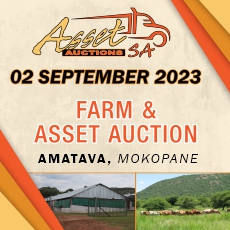Cold Stress in Pigs
Pig Farming in South Africa
Piglets have little fat to protect them against the cold.
Because of South Africa’s warm climatic conditions, cold stress in pigs is not as serious as in some cooler countries. The winters, however, and especially winter nights, can nevertheless be really chilly in some parts of the country, so farmers in these areas need to take extra precautions to shelter their pigs during such times. Piglets are especially vulnerable to cold stress since, unlike adult piglets, they have very little body fat to protect them from the cold, especially during the first forty-eight hours after they have been born. They will not thrive and most probably end up dead if they are not kept warm.
Signs of Stress
Pigs that are cold may huddle together to warm themselves.
As with adult pigs, failure to keep piglets warm will result in the energy they generate from their food being used for heat generation instead of growth.
So how do you know your pigs are suffering from cold stress?
According to Animal Agriculture at Washington State University, pigs suffering from cold stress will huddle together or lie with their feet tucked beneath them in an attempt to get warm.
They may also shiver from the cold. If the cold stress continues for more than a few days, the pigs will get skinny, grow poorly and develop long rough coats of hair. They may also suffer from diarrhoea.
Prevention
Spot heating can be used to warm piglets.
Providing comfortable temperatures during farrowing is easier said than done, since sows and piglets thrive at different temperature levels.
Sows are generally most comfortable at 16 to 25 degrees celsius, while piglets will thrive at temperatures as high as 32 degrees celsius.
Sows that are getting too hot will start eating less and also produce less milk, which in turn will have a negative impact on piglet growth.
The piglets, however, need to be kept warm to grow well.
In modern facilities, the room temperature will, therefore, be adapted to the requirements of the sows, while additional or spot heating is used to keep the piglets warm.
For accuracy, it is important to take the room temperature at the same level and also a few feet into the area where the piglets are kept.
The use of different flooring material can help strike a balance between the needs of the sow and the piglets.
Flooring is also strategically used to solve this problem, with sows usually lying on a floor made from cooler material than the area on which the piglets are kept. The floor can be made from material ranging from wood to concrete, steel, plastic, fibreglass, cast iron and aluminium.
Using bedding, such as straw or wood shavings, on the floor surface where the piglets are kept, will not only help to raise temperatures where the piglets are kept but also help to keep them comfortable. The bedding should nevertheless, be frequently replaced or new bedding added to keep the piglets dry and clean.
Piggeries should be well insulated, from the floors to the ceilings and the walls to prevent drafts. Some farmers use plastic curtains to close windows during cold and adverse climatic conditions.
Heat Stress in Pigs
Pig Farming in South Africa
Piglets suffering from heat stress will be less active than normal.
Pigs are highly sensitive to hot and cold climatic conditions. The ideal temperatures at which they should be kept will depend on room temperature, relative humidity, the age of the pig, the breed, the type of flooring and housing. As a rule of thumb though, adult pigs thrive at temperatures above 15 degrees celsius and below 30 degrees celsius.
It is very hard for pigs to cool themselves down. They are unable to sweat, have small lungs in comparison to their body size and have a thick layer of fat that insulates them from the cold. Genetic improvement has worsened the problem, according to Alltech, resulting in today’s breeds producing more than 30% internal heat from respiration and metabolism than pigs in the early 1980s.
Signs of Stress
Pigs struggle to cool themselves down.
Heat stress is a great challenge in South Africa, because of our warm climatic conditions, which are bound to get even warmer in future, due to climate change. Farmers, therefore, have to consider the climatic conditions of the area where they want to raise pigs and develop a strategy to prevent heat stress before they start farming with pigs.
Failure to do so will have a negative impact on feed intake, growth rates, milk production of sows and may even influence reproduction, by causing infertility. Heat stress may also result in fluid imbalances, which can lead to diarrhoea and under severe cases death. Heat stress can also render a pig to be more vulnerable to diseases.
Pigs affected by heat stress or heat stroke will have a high respiratory rate and will be less active, in other words, keep lying down, in an attempt to generate less energy and cool down. Under severe cases they may become weak, their muscles may start trembling and they may vomit or suffer from diarrhoea.
Prevention
Hardier breeds might be a better option if the pigs are produced outside.
Farmers in modern facilities use climate control to adjust room temperatures and humidity levels. If you do not have access to these technologies, design your piggery to be cool in summer through strategic placement and the use of insulation.
Corrugated iron roofs, for example, may be covered with leaves or grass to reduce temperatures. Farmers can also put sprinklers on top of the roofs of houses to cool the houses down during heat waves.
The impact of the floor type should also be considered, with some floors generating more heat than others.
According to The Pig Site, a 5 kg pig kept on straw, for example, would thrive at temperatures between 27 to 30 degrees celsius, but at 39 to 32 degrees celsius if kept on slatted floors.
A 90kg pig kept on straw would have to be kept at 11 to 22 degrees celsius, but at 15 to 24 degrees celsius if kept on slatted floors.
If the pigs will be produced outside, it might make sense to choose a hardier indigenous breed that is able to withstand warmer climatic conditions. Pigs with black skins are also less vulnerable to sunburn.
Pigs that are kept outside should have access to shade and shelter. Mud puddles will also help to cool pigs down and offer partial protection against sunburn.
Treatment
Sprinkling water over pigs or a mud bath may help to relieve heat stress.
Only a few hours of exposure may have a negative impact on production, so pigs should be cooled down as soon as possible when climatic conditions rise above the ideal temperatures at which they should be kept. Reducing pig numbers may also help, as overcrowding will worsen the situation.
Steps should be taken to maintain feed intake. Alltech suggests farmers keep the feed fresh, reduce the crude protein content of the feed, use fat and oil for instant energy, increase the nutrient density of feed or give the pigs wet feed to encourage intake. Food should also be given during the cooler times of the day.








